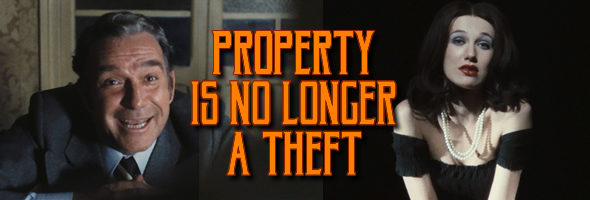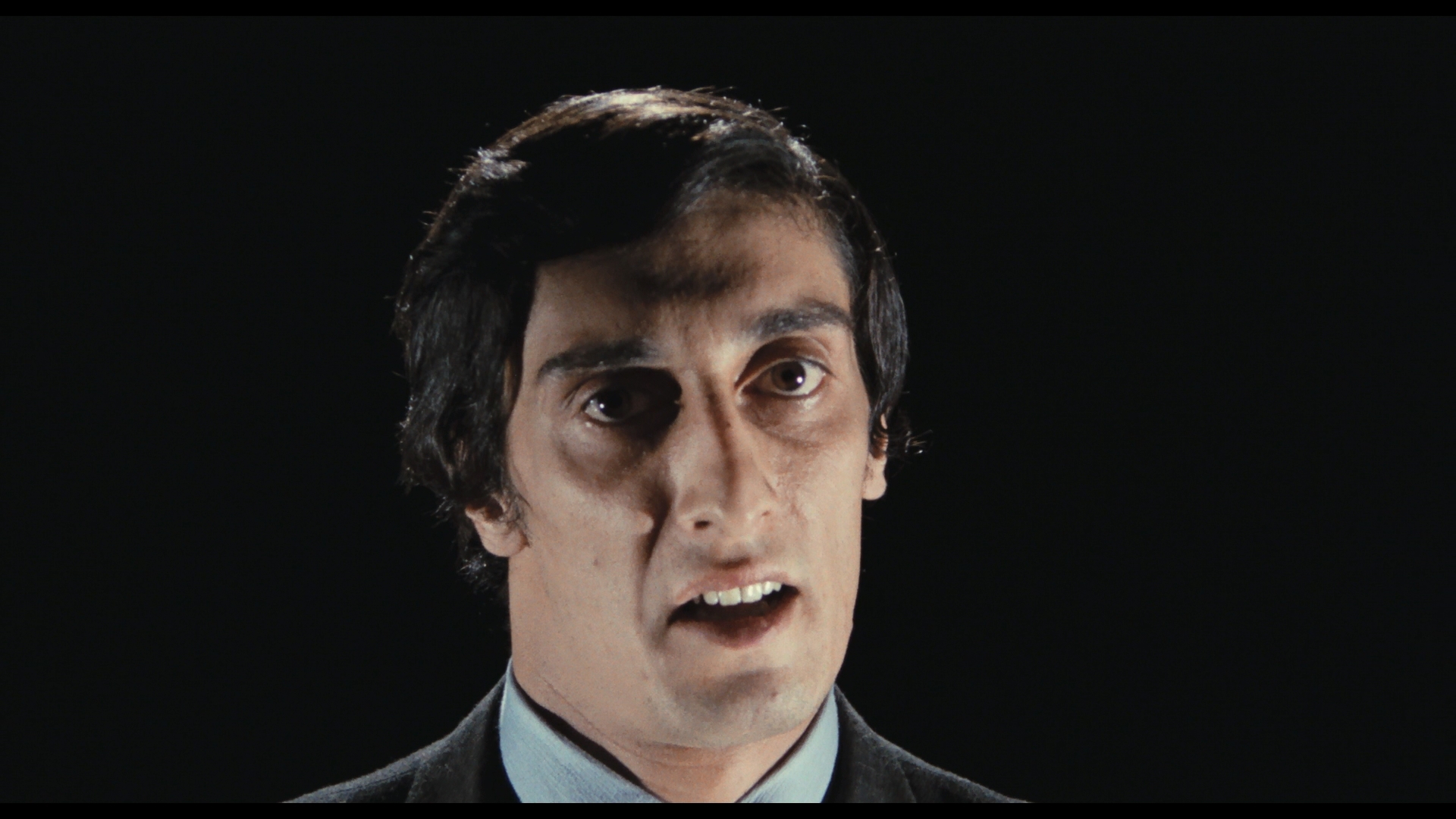





 Allergic to the
Allergic to the  very touch of cash, Total realizes his current lifestyle and occupation aren’t fulfilling at all as he observes unscrupulous, backstabbing people around him enjoying the high life without earning it. Total decides that the best thing to do would be a form of social terrorism, removing everything these people care about to realign their world view. The butcher receives the brunt of the Total’s little experiment, which also encompasses the butcher’s girlfriend, the overheated Anita (Nicolodi).
very touch of cash, Total realizes his current lifestyle and occupation aren’t fulfilling at all as he observes unscrupulous, backstabbing people around him enjoying the high life without earning it. Total decides that the best thing to do would be a form of social terrorism, removing everything these people care about to realign their world view. The butcher receives the brunt of the Total’s little experiment, which also encompasses the butcher’s girlfriend, the overheated Anita (Nicolodi).  Ennio Morricone (who goes nuts with the harpsichord here in one of the dozen scores he composed in ‘73), and cinematographer Luigi Kuveiller (Deep Red, Blood for Dracula) after 1971’s The Working Class Goes to Heaven. Everyone is operating at full throttle here, but the real wild card is Nicolodi, a newcomer at the time who would soon go on to Deep Red and Italian horror immortality in other Argento films and Mario Bava’s Shock. She’s a smoldering revelation here, sporting blood-red lipstick and commanding the screen like a pro even during one of the creepiest nude scenes ever committed to celluloid.
Ennio Morricone (who goes nuts with the harpsichord here in one of the dozen scores he composed in ‘73), and cinematographer Luigi Kuveiller (Deep Red, Blood for Dracula) after 1971’s The Working Class Goes to Heaven. Everyone is operating at full throttle here, but the real wild card is Nicolodi, a newcomer at the time who would soon go on to Deep Red and Italian horror immortality in other Argento films and Mario Bava’s Shock. She’s a smoldering revelation here, sporting blood-red lipstick and commanding the screen like a pro even during one of the creepiest nude scenes ever committed to celluloid.  the film seems to be going for, but otherwise it's pristine with vivid colors and a nice sense of depth even in
the film seems to be going for, but otherwise it's pristine with vivid colors and a nice sense of depth even in  the many sequences with characters in near darkness addressing the camera. The Italian LPCM mono audio sounds great as well (optional English subtitles included in both standard and SDH iterations), with Morricone's aggressive music benefiting the most. Three new featurettes have been included -- “My Name Is Total” (19m46s) with Bucci, “The Middle-Class Communist” (23m33s) with producer Claudio Mancini, and “The Best Man” (23m4s) with makeup artist Pierantonio Mecacci -- focusing on everything from the jittery Italian political and financial climate of the time and Petri's socially aware cinema to the stylized look of the film with heavy dashes of surreal visuals and dialogue throughout in the filmmaker's typical style. The packaging features reversible cover options (the original poster design or a new one by Nathanael Marsh) and an insert booklet with liner notes by Camilla Zamboni.
the many sequences with characters in near darkness addressing the camera. The Italian LPCM mono audio sounds great as well (optional English subtitles included in both standard and SDH iterations), with Morricone's aggressive music benefiting the most. Three new featurettes have been included -- “My Name Is Total” (19m46s) with Bucci, “The Middle-Class Communist” (23m33s) with producer Claudio Mancini, and “The Best Man” (23m4s) with makeup artist Pierantonio Mecacci -- focusing on everything from the jittery Italian political and financial climate of the time and Petri's socially aware cinema to the stylized look of the film with heavy dashes of surreal visuals and dialogue throughout in the filmmaker's typical style. The packaging features reversible cover options (the original poster design or a new one by Nathanael Marsh) and an insert booklet with liner notes by Camilla Zamboni. ![]()